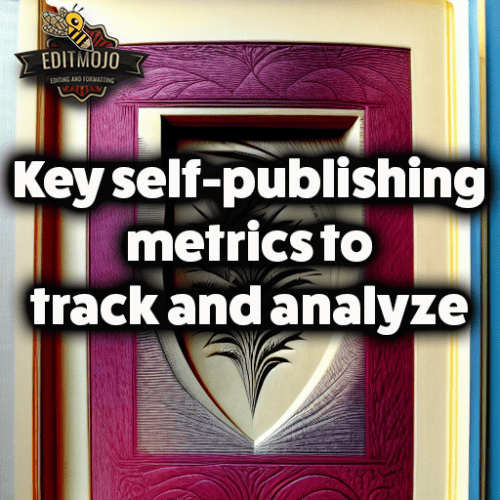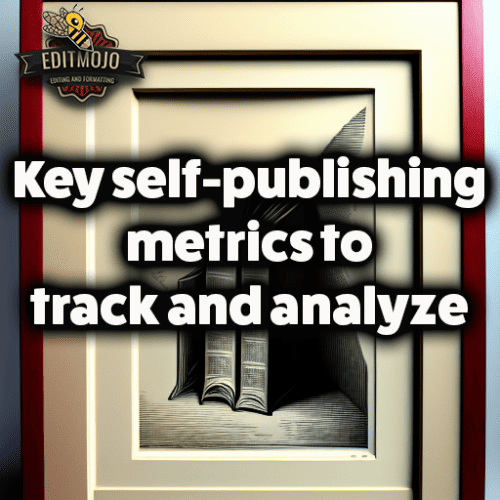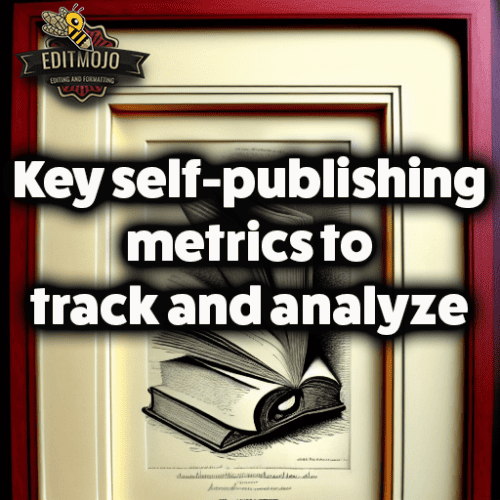Key self-publishing metrics to track and analyze
Key self-publishing metrics to track and analyze. There’s no question about it: self-publishing has transformed the literary landscape. It’s a domain where writers morph into entrepreneurs, brand managers, and marketers. But like any business, successful self-publishing relies heavily on understanding and leveraging key metrics. Grasping these numbers is a sure-fire way to optimize your publishing journey and drive your success.
Key Takeaway Table
| Key Metric | Importance | Takeaway |
|---|---|---|
| Book Sales | Gives insight into how many copies are being sold | High sales can indicate successful marketing strategies and audience response |
| Revenue | Determines profitability | Monitor trends and consider experimenting with pricing |
| Website Traffic | Reflects audience’s interaction with author’s website | Use analytics tools to gain insights into user behavior |
| Email Marketing | Evaluates effectiveness of email campaigns | High open rates and click-through rates can suggest engaging content |
| Social Media Engagement | Measures engagement and growth of social media followers | High engagement often more valuable than high follower count |
| Reader Demographics | Provides insight into audience | Use data to inform marketing and content strategies |
| Reader Reviews and Ratings | Influences potential readers and visibility | Analyze reviews for feedback and improvement |
| Read-through Rates | Measures reader satisfaction and engagement (for series) | High rates can indicate audience demand for more |
| KDP Select Enrollment | Can impact earnings and visibility | Weigh benefits against exclusivity requirement |
| Amazon Best Sellers Rank | Reflects sales compared to other books on Amazon | High rank can increase visibility and sales |
| KDP Royalties | Determines income from book sales | Understand how price points impact royalty |
Understanding Self-Publishing Metrics: An Overview
Self-publishing metrics are quantifiable measurements that offer a snapshot of your book’s performance in various areas. They’re the heartbeat of your business, indicating the health of your sales, marketing, and readership interactions. They can tell you if your latest marketing strategy is working, or if your new book cover is attracting more readers.
However, not all metrics are created equal. Some, like the number of likes on your Facebook post, are known as ‘vanity metrics.’ They may look nice, but they don’t offer actionable insights. Others, such as conversion rates and book sales, are ‘actionable metrics’ that you can use to make informed decisions and strategies. In self-publishing, focusing on actionable metrics can be the difference between spinning your wheels and making strides towards your goals.

Sales Metrics
Book Sales
It goes without saying that one of the most essential metrics in self-publishing is the number of books sold. Tracking your sales over time, noting your peak sales days, and observing the impact of promotions can provide valuable insights. For example, if you notice a spike in sales after a specific promotional event, that’s a clear indication of what your audience responds to.
Revenue
Equally critical is tracking your total revenue and average revenue per book. It’s exciting to see a surge in the number of books sold, but remember, the ultimate goal is profitability. Keep an eye on your revenue trends over time, and don’t be afraid to experiment with pricing to see what maximizes your earnings.
Marketing Metrics
Website Traffic
Your author website is a powerful marketing tool. Understanding how many people visit, where they come from, and what they do on your site is crucial. Using analytics tools like Google Analytics can give you rich insights into user behavior and preferences.

Email Marketing
“The money is in the list.” You might have heard this marketing adage before. Email marketing remains one of the most effective ways to connect with your audience. Keep track of your email open rates, click-through rates, and subscriber growth rates. These metrics can help you tweak your email campaigns for maximum impact.
Social Media Engagement
The world of social media can be a gold mine for self-published authors. It’s not just about how many followers you have but the quality of engagement. Monitor your post engagements, shares, and follower growth. Remember, a smaller, more engaged audience can be more valuable than a large, indifferent one.
Readership Metrics
Reader Demographics
Knowing who reads your books is key. Are they predominantly male or female? Young or old? Urban or rural? This demographic data can inform everything from your marketing strategy to the content of your future books.
Reader Reviews and Ratings
Reviews and ratings are the lifeblood of a self-published author. They influence potential readers and impact your visibility on platforms like Amazon. While they can sometimes be a tough pill to swallow, analyzing reviews can offer valuable feedback and opportunities for improvement.
Read-through Rates
If you’re writing a series, read-through rates are a must-watch metric. This measures the number of readers who purchase subsequent books in your series after reading the first one. A high read-through rate is a sign of satisfied readers eager for more.

KDP (Kindle Direct Publishing) Metrics
KDP Select Enrollment
Choosing to enroll in KDP Select and Kindle Unlimited can have a significant impact on your earnings and visibility. Track the number of pages read to estimate your potential earnings and weigh the benefits against the exclusivity requirement.
Amazon Best Sellers Rank
Your Amazon Best Sellers Rank is a reflection of your sales compared to other books on the platform. While this metric can fluctuate greatly, a consistently high rank can significantly increase your visibility and sales.
KDP Royalties
Always keep a close eye on your KDP royalty reports. Understanding how different price points impact your royalty can help you price your book optimally.
The Role of Analytics Tools in Tracking Self-Publishing Metrics
Analytics tools like Book Report, KDP Rocket, and ReaderLinks can make the task of tracking metrics significantly easier. Look for features like sales tracking, keyword analytics, and competitor analysis. Remember, these tools are only as useful as the actions they inspire.
Pitfalls to Avoid When Tracking Self-Publishing Metrics
Don’t fall into the trap of mistaking correlation for causation. Just because two metrics move in tandem, it doesn’t mean one is causing the other. Similarly, avoid overemphasizing vanity metrics that don’t offer actionable insights. Lastly, don’t suffer from analysis paralysis; always focus on data that leads to actionable decisions.
Case Study: Success Through Metrics
Consider the example of Mark Dawson, a self-published author who famously leveraged Facebook ads to drive his book sales. Mark didn’t blindly throw money at advertising; instead, he meticulously tracked his ad performance, tweaking and optimizing based on the data. His success is a testament to the power of tracking and analyzing self-publishing metrics.
Conclusion (Key self-publishing metrics to track and analyze)
In the age of self-publishing, authors are more than just writers – they are entrepreneurs driving a business. Like any successful business, knowing your numbers is crucial. Tracking and analyzing self-publishing metrics can provide invaluable insights to steer your strategies, boost your sales, and ultimately, reach more readers.
Call to Action (Key self-publishing metrics to track and analyze)
It’s time to take charge of your self-publishing journey. Start tracking your metrics today, and see the difference data-driven decisions can make. If you’ve had experiences with tracking self-publishing metrics, or have questions about it, please share them in the comments below. Remember, knowledge is power, and sharing that knowledge only amplifies it. Happy publishing!
Top Five Questions and Answers Table
| Questions | Answers |
|---|---|
| 1. Why are self-publishing metrics important? | They provide actionable insights that can help improve your strategies, boost your sales, and ultimately, help you reach more readers. |
| 2. What is the difference between vanity metrics and actionable metrics? | Vanity metrics may look impressive but don’t provide actionable insights (like the number of likes on a Facebook post), whereas actionable metrics can be used to make informed decisions and strategies (like conversion rates and book sales). |
| 3. Why are reader reviews and ratings important? | They influence potential readers’ purchasing decisions and impact your visibility on platforms like Amazon. They can also provide valuable feedback for improvement. |
| 4. What role do analytics tools play in self-publishing? | Analytics tools make the task of tracking metrics significantly easier. They offer features like sales tracking, keyword analytics, and competitor analysis. |
| 5. What are some pitfalls to avoid when tracking self-publishing metrics? | Avoid mistaking correlation for causation, overemphasizing vanity metrics, and suffering from analysis paralysis. Focus on data that leads to actionable decisions. |
